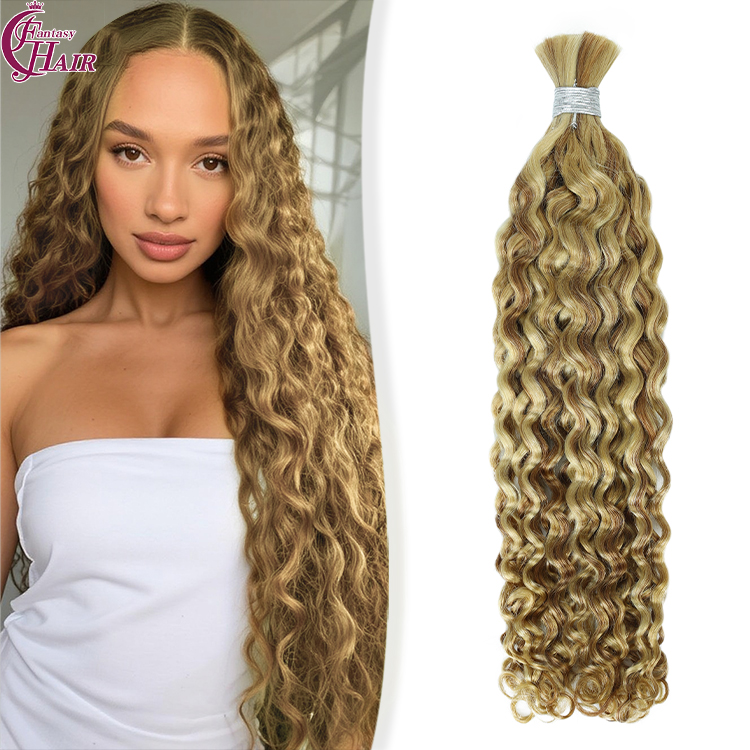The allure of lustrous, flowing hair has captivated humanity for centuries, and the demand for high-quality human hair extensions and products has never been higher. At the heart of this demand are human hair manufacturers, whose craft combines artistry with technical expertise. These manufacturers are the custodians of a timeless tradition, providing products that enhance natural beauty and offer solutions for those experiencing hair loss or seeking a change in style. This article explores the intricate process of human hair manufacturing, the standards of excellence that define top-tier manufacturers, and the impact they have on the beauty industry. The content is designed to meet the standards required for Google indexing and official website articles.
The Essence of Human Hair Manufacturing
Human hair manufacturing is a meticulous process that transforms raw hair into beautiful, wearable products:
1. Sourcing: The journey begins with ethical sourcing, where manufacturers obtain hair that is free from chemical processing and sourced with respect for donors.
2. Cleaning and Sorting: Raw hair is thoroughly cleaned and sorted to ensure that only the highest quality strands are used.
3. Processing: The hair is processed to remove impurities and to prepare it for weaving or bonding, while preserving its natural texture and shine.
4. Manufacturing: Skilled artisans and technicians then craft the hair into extensions, weaves, or wigs, paying close attention to detail and quality control.
5. Quality Assurance: Rigorous testing and inspection are conducted to ensure that each product meets the highest standards before reaching the market.
Criteria for Exceptional Human Hair Manufacturers
Several key factors distinguish a superior human hair manufacturer:
1. Reputation and Experience: A manufacturer’s longevity and reputation within the industry are strong indicators of their reliability and quality.
2. Ethical Sourcing: Commitment to ethical sourcing practices ensures that the hair is obtained in a manner that respects human rights and cultural norms.
3. Technological Advancements: Utilizing the latest technology and innovative methods to enhance product quality and customer satisfaction.
4. Quality Control: Maintaining strict quality control measures at every stage of the manufacturing process.
5. Customer-Centric Approach: Prioritizing customer needs and feedback to improve products and services continuously.
The Manufacturing Process: A Detailed Look
Let’s delve deeper into the stages of human hair manufacturing:
1. Sourcing and Collection: Ethical sourcing involves collecting hair from donors who have not undergone chemical treatments. This raw hair is often sourced from countries where donating hair is a cultural practice.
2. Cleaning: The collected hair is cleaned to remove any dirt, oils, and bacteria. This process is crucial to ensure the hygiene and quality of the final product.
3. Sorting: The cleaned hair is sorted by length, color, and texture. Sorting ensures that each batch of hair is consistent and free from shorter strands or foreign materials.
4. Processing: The hair may undergo processes to remove the cuticle layer, which can cause matting. This step is carefully executed to maintain the hair’s natural feel and appearance.
5. Weaving or Bonding: Depending on the desired end product, the hair may be machine or hand-woven into wefts or bonded to create seamless extensions.
6. Quality Assurance: Before packaging, each product is inspected for quality. This includes checking for uniformity, color consistency, and overall appearance.
The Impact of Human Hair Manufacturers on the Beauty Industry
Human hair manufacturers have a profound impact on the beauty industry:
1. Meeting Diverse Needs: They provide a range of products that cater to diverse hair types, textures, and styles, enabling individuals to express their personal identity.
2. Innovation: Continuous innovation in hair manufacturing leads to new products that push the boundaries of hair fashion and offer solutions for hair-related challenges.
3. Supporting Industries: The demand for human hair products supports numerous related industries, including beauty salons, cosmetology schools, and online marketplaces.
4. Global Reach: Human hair products are traded globally, impacting economies and enriching cultural exchanges.
Sustainability and Ethical Considerations
As the beauty industry evolves, sustainability and ethical considerations are becoming increasingly important:
1. Eco-Friendly Practices: Manufacturers are adopting eco-friendly processes to reduce waste and minimize their environmental footprint.
2. Ethical Labor: Ensuring fair labor practices and safe working conditions for employees is a hallmark of a responsible manufacturer.
3. Animal Welfare: Human hair manufacturers play a role in promoting animal welfare by providing an alternative to animal-based hair products.
Conclusion
Human hair manufacturing is an intricate and noble craft that enriches the lives of many. The journey from ethical sourcing to the creation of exquisite hair products is a testament to the skill, dedication, and artistry of human hair manufacturers. As consumers and industry professionals seek out products that are not only aesthetically pleasing but also ethical and sustainable, these manufacturers are rising to the challenge, setting new standards for quality and responsibility. By understanding the depth of their work and the care they invest in their products, we can better appreciate the value they bring to the beauty industry and the lives of their customers.





